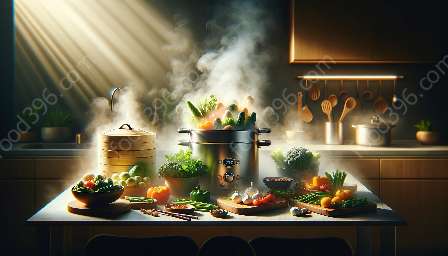Simmering is a popular cooking technique that involves submerging food in a liquid and cooking it gently over low heat. Many cooking enthusiasts appreciate the method of simmering for its ability to enhance the flavors of the ingredients and create tender, succulent dishes. In this comprehensive guide, we will delve into the art of simmering, its compatibility with steaming, and its role in various food preparation techniques.
The Simmering Process
Simmering is a versatile cooking method that is widely used in both professional kitchens and home cooking. The process begins by placing the ingredients in a pot or pan and covering them with a flavorful liquid such as broth, wine, or sauce. The mixture is then heated over low heat until small bubbles form and gently break the surface. Unlike boiling, which involves rapid and vigorous movement of the liquid, simmering requires a slower and more gentle approach.
The Benefits of Simmering
Simmering offers several benefits that contribute to its popularity among chefs and home cooks. The slow and gentle cooking process allows the flavors of the ingredients to meld together, resulting in rich, complex flavors. Additionally, simmering helps to tenderize tougher cuts of meat, making them more palatable and enjoyable. The low heat used in simmering also helps to preserve the nutritional content of the ingredients, making it a healthy cooking method.
Compatible with Steaming
While simmering and steaming are distinct cooking techniques, they share a common goal of gently cooking food to retain its natural flavors and nutrients. Both methods involve the use of moist heat to cook ingredients, albeit with some differences in approach. Steaming relies on the vapor produced by boiling water to cook food, while simmering involves cooking food in a liquid directly. Despite these variances, the two techniques can complement each other in various dishes, offering a balance between texture and flavor.
Simmering in Food Preparation
Simmering plays a crucial role in food preparation, particularly in the creation of soups, stews, sauces, and braised dishes. The slow and steady cooking process allows the flavors of the ingredients to infuse into the liquid, resulting in rich and flavorful dishes. Whether it's a hearty beef stew or a delicate vegetable soup, the art of simmering elevates the taste and texture of the final dish.
Conclusion
In conclusion, simmering is an artful and beneficial cooking technique that adds depth and richness to a wide range of dishes. Its compatibility with steaming and other food preparation techniques makes it a valuable skill for any cooking enthusiast. By understanding the intricacies of simmering and its role in creating flavorful dishes, chefs and home cooks alike can elevate their culinary prowess and delight their taste buds with delectable, slow-cooked masterpieces.

